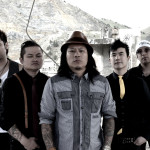It’s hard to deny the success of Korean pop music in America today. From Girls Generation performing on The Tonight Show with David Letterman to Psy‘s number one hit, “Gangnam Style” topping the charts in 2012, it seems that Korea — and its cultural “Kpop” exports — is here to stay.
Selling out arena-sized venues to tens of thousands of screaming fans, and raking in millions in merchandise sales, Korea’s cross-cultural marketing strategy for American market entry is arguably the largest contributor to Korea’s success in the American music industry.
Starting with online strategy, from social media marketing to viral marketing, from Youtube to Instagram, Korean companies embraced digital channels with fervor to reach the largest audiences. Social media management teams keep a constant stream of content flowing on artist accounts, Tweeting and updating official Facebooks in English, connecting and engaging with fans any way possible.
Korean media companies such as Mnet seized upon the viability of the growing market to launch a broadcast television station through Comcast, with programming chock-full of music videos and dramas from Korea, presented in English and repackaged for American audiences. Mnet also produces its own series of original programming, offering media digitally on their website and Youtube channel to make their content accessible for would-be fans who aren’t Comcast subscribers.
To tap into the vast market of Asian pop culture fans in America, Korean companies set up booths at anime and comic conventions nationwide, staffed with perfectly coiffed, fashionably-dressed staff to hawk CDs and other merchandise. Their efforts quickly took over the market share Japanese rock once commanded in the United States, soon surpassing it. Where Jrock bands once headlined venues that numbered in the thousands, Kpop artists now regularly sell out arenas and massive concert venues with ease.
Before long, Kpop conventions were popping up nationwide, the most recent being KCON, which featured major Korean pop stars like G-Dragon alongside American talent, Missy Elliot, in order to cross-brand Kpop with American hip hop, further cementing Korea’s place in the American market.
Fans were given the opportunity to meet and interact with their favorite idols in a number of ways at panels, workshops, and concerts, creating more fan loyalty and generating even more excitement. As with all other Korean music endeavors, the event was amplified through social media, with heavy fan and media coverage to achieve millions of media impressions.
If there is an avenue that can be taken to promote Korean music and grow its market share, you can count on Korean companies to capitalize upon it.
Japan’s conservative approach to market entry: Jrock’s rise and fall
In contrast, Japan’s market share in America has fallen dramatically due to the lack of ongoing cross-cultural marketing, sub-par fan engagement, and the refusal to employ American marketing strategies and tactics. Unlike Korean companies who took a considerable interest in America, investing millions to develop their market share, Japan took a very conservative approach to market entry, investing very little capital, and relying on American promoters and anime conventions to bring their artists over to perform. Where Korean companies took extremely dangerous risks in order to grow market share, many Japanese companies largely expected American promoters and marketing companies to carry the risk of market entry.
The only exception, Jrock Revolution, was the first and only of its kind, bringing popular Japanese bands to hungry Western audiences in 2007, showcasing nine Japanese rock bands in a two-day sold-out festival at the Wiltern Theater in Los Angeles, CA. Fans came from all over the world, traveling from South America, Europe, and all across the United States. They camped out for days ahead of the show in hopes of claiming the best spot closest to the stage, spending hundreds on transportation, lodging, and concert tickets — all for the sake of seeing their favorite bands. With the popularity of Jrock at an all-time high, Japanese rock bands began to come to America to perform, with over 100 performances in 2008 alone.
Yet, the popularity of Jrock was driven by domestic fan-led efforts to grow the market through word of mouth. While music placements in popular Japanese animations helped to gain exposure for bands, no other form of marketing saw more success in growing the market other than word of mouth advertising. Though much of Kpop’s initial market share also was derived from fan-led efforts, Korea employed American marketing strategies in order to reach the highest volume of fans and achieve the largest amplification for their cultural product. Japanese entertainment companies, however, overwhelmingly refused to change their marketing or promotional strategies to cater to American audiences.
On the publicity front, Western press covering events were only allowed to use photography and content pre-approved by management companies in order to promote the artist in editorials and interviews. For many experienced American journalists, such a publicity approach was not only unethical to American journalistic standards, which require total transparency and freedom of speech, but also unacceptable. Such a standard made working with larger, more mainstream press outlets very difficult, and was further exacerbated by the lack of artist presence and engagement on social media sites, which would have allowed American media to give a more “authentic” picture of the artist in their articles.
Though bands and celebrities were taking to Twitter and Facebook by storm, even by 2008, the vast majority of Japanese artists still did not have a presence on either social media site, preferring to use MySpace at a time when the network had already become obsolete in America. When pressed by American promoters and marketing companies to move onto newer social media pastures, Japanese managements largely demurred. Though bands occasionally shot promotional videos on YouTube, they fell few and far in between, were predictable, and heavily scripted. Concerts in America were also marked by expensive technical riders and backline demands, which many anime conventions and promoters did not have the budget to provide. More problematically, Japanese management companies universally banned all video and photography at concerts — confiscating mobile devices and cameras, and taking down concert footage on YouTube by citing copyright infringement. (In contrast, Korean entertainment companies allow video and photography at concerts, and never take down fan-shot footage on YouTube.)
Because concerts were not amplified through YouTube, Facebook, and Twitter, the American market for Japanese rock could only grow incrementally through word of mouth and occasional marketing campaigns for certain Japanese artists touring the United States. Yet, even those campaigns were limited by pre-approved content. Though American promoters and marketing companies tried their best to engage fans, the best engagement always occurs between the artist and the fan, unregulated and unchecked by management companies or labels.
Though engagement between Japanese artists and Western fans does occasionally occur, it does not occur with nearly as much regularity or volume as the level of engagement Korean artists and entertainment companies regularly offer international fans. Because of Korea’s globalizing approach to market entry, fan engagement, and outreach, as well as their embrace of Western marketing strategies to cater to non-Asian audiences, Korea’s market share not only has grown in America, but also throughout the rest of the world.
The future of Japanese music in the West
If Japanese companies hope to regain the impressive market share they once enjoyed and catch up to Korea, they will have to revise their approach towards international market entry and embrace Western marketing strategy. With Korean entertainment companies bombarding potential Asian pop culture fans from every direction with evergreen content specifically packaged for international audiences, Japan will have to globalize its approach, be willing to take more risks, and regain the competitive advantage it once had.
In order to fund these efforts, Japanese companies may also have to consider working with governmental cultural exchange programs as Korean companies have done. Such a program would allow companies to build a lasting relationship with international audiences and territories instead of only doing tours once or twice a year.
Reclaiming a market once lost will not be an easy task, but far from impossible. With the right strategy and approach, the market can recover, and Jrock may very well regain its spot in the international limelight.
Perhaps, this time, it’ll go mainstream.
Krystal Yang is a marketing, branding, and engagement consultant with a background in marketing, publicity, digital marketing, social media, and street team marketing. She crafted cross-cultural marketing strategy for market entry into America for artists like X Japan, SUGIZO, and D’espairsRay, and brands like Jrock Revolution. You can contact Krystal at mail@krystal-yang.com




 Subscribe
Subscribe Subscribe Via RSS
Subscribe Via RSS








January 7, 2014, 12:38 pm
Very fantastic article. I just now became aware of your blog site along with wished to point out that We have actually adored surfing around your blog post discussions. No matter the reason We are signing up for ones give that i’m expecting you’re posting just as before immediately!
January 7, 2014, 11:55 pm
Found this article pretty late but it was so interesting, although marketing strategies and approaches aside, I’m sure the music itself has played a big role too. Rock music and Pop music are two different beasts. Rock music has largely fallen out of favor in the face of an influx of indie pop rock styles which is a marked contrast from what Japan was traditionally sending over our way.
On the other hand, for decades Korea has been producing Pop music that (language aside) would be easily accepted by an American audience in both style and approach. It’s awesome that finally some strides are being made on that front.